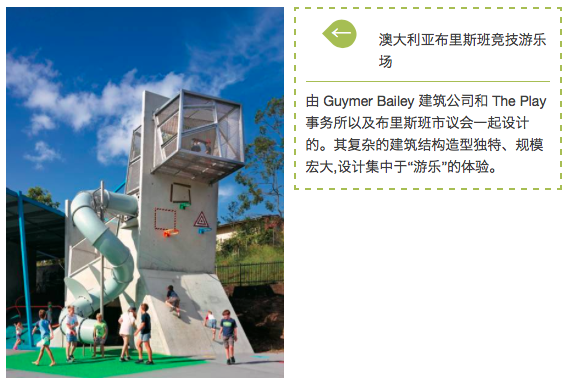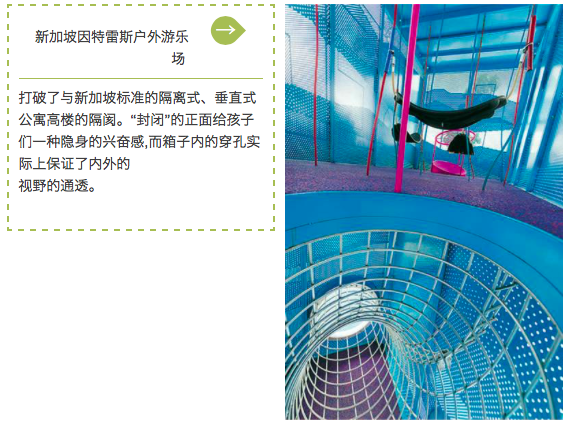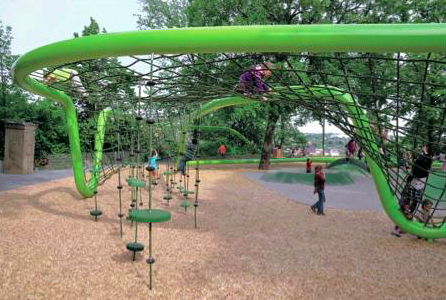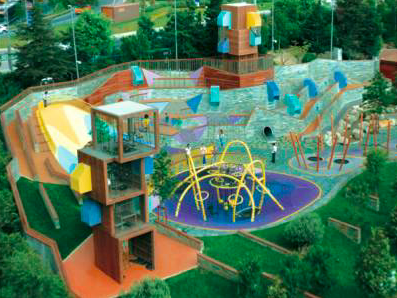
The Enlightenment of Building Child-Friendly Urban Space Abroad-[Case]
Child-friendly cities abroad behave differently in practice. Some are committed to exploring the connotation of urban open space, including open or semi-open spaces for children's living, living, learning, and entertainment into the urban open space system to expand its connotation, and some are not only satisfied with the urban open space for children's space The protection of interests is to improve the quality and characteristics of space in a deeper level. Others are dedicated to the protection of space security, each with its own characteristics.
Munich is one of the child-friendly cities. A major feature of child-friendly is that the characteristics of urban open space are fully studied for the benefit of children's space. The nature of urban open space does not completely coincide with urban green space. It is mainly composed of urban green space, and it also integrates a variety of other land-use spaces for the public to share. The outdoor space of the airport is an urban open space that belongs to the land for transportation facilities.It was originally intended to provide leisure and entertainment functions for passengers on board, but the city of Munich fully took advantage of the scarcity of this land. A very special children's play education space. Munich Airport is one of the world's top ten child-friendly airports.In addition, the display of historical aircraft and rescue helicopters is very unique. Children can also be invited to play the role of "pilots". They also design a viewing mountain to board the view. View platform, you can get a panoramic view of the airport. With the help of the telescope, you can also see the marvelous panoramic view of the tarmac. All the planes that take off and land will be in sight, which is very attractive for children.
One of the powerful measures to build a child-friendly city in Denver, USA is to create a "learning landscape" within the city. Actively expand the urban open space system, that is, to turn campus space into an organic part of urban open space. Since 1998, the courtyards of 96 neglected public primary schools have been transformed into vibrant, safe, and multifunctional urban open spaces, with a budget of approximately $ 450,000 per school, and working with school officials, teachers, students, The society and the public communicate together and design together to create a child-friendly urban space full of cultural vitality. For more than a decade, the continuous development of the learning scene has become an outstanding example of open spaces in cities around the world. Each learning scene includes: community entrance, shady place, public gathering area, natural wild park, outdoor art, multi-purpose venue, hard ground game education elements, safe game facilities that can participate, innovative elements, etc. Not only provide children with diversified and natural play spaces, but also provide children with a place to learn about nature and become familiar with it. Multiple learning scenes have gradually formed a network, becoming an open space system for urban children of different sizes and levels and within walking distance, which greatly enhances Denver's child attraction and urban charm.
The London “walking bus” guarantees public safety for children. "Walking bus" refers to a group of children walking to and from school under the escort of two or more adults, and is considered to be a healthy and environmentally friendly way of travel. Parents participating in the "walking bus" spontaneously organized to take turns escorting the children. One adult would lead the entire team as a "driver", while the other acted as a "ticket conductor" to follow the team. Since the “walking bus” has a fixed line like a traditional bus, it also has a “bus stop” (a place along the way where children can join the walking bus) and a “reception time”. Site location and design features are well researched.
A book published in 2008, "Keeping the Last Child in the Forest," caused heated discussions in western countries.The current cities are far away from nature, and children are attracted to virtual spaces such as the Internet, TV, and games. Mental or physical illness, allowing urban open spaces to retain children and giving children a place to go, retains future and present talents. Is the open space of cities, commercial or industrial parks conflicting with the interests of children's space? In fact, the answer is no. Fish and bear's paw can have both. Munich, Denver, and London are the best examples.
The urban open space system usually consists of three levels: planar space, which refers to the more spacious places in the city for citizens to relax, including urban square space, park green space, etc .; linear space, which refers to the linear shape of roads and rivers. The element is a strip-shaped place supported by it; the point-shaped space mainly refers to the fragmentary space with common attributes between various buildings. Child-friendly urban open space should fully reflect children's right to survival and development. Therefore, the urban open space system should be restructured in accordance with the needs of children. Almost every community in western countries has public spaces designed for children.The design of these public spaces is not complicated, but it is suitable for children's daily activities.For example, a water park in a community in Vancouver has simple facilities, with a water gun and a boat. Part of children's lives. The real children's park should be natural, allowing children to discover and feel beauty in nature. An open field of grass, a bunch of floating reed flowers, a clear stream of small rivers and lakes, children can lie on the grass to study ants moving, dandelion parenting, can touch fish and shrimp in the stream naked, and can also shuttle in Chase in the bush and experience the fun of the game. For example, Bucheon Park in Tokyo is a children's park located in a long and narrow area surrounded by a community. There is a stream with solitary trees in the stream and floating trees under the tree. It is very simple and very fun.

The water park in Tychy, Poland, one of the main purposes of the design is to integrate the entire water park with the surrounding natural environment. The design outline and site selection of the water park are related to the surrounding trees, and the installation requirements of various water facilities are highly effective and interesting. Various colored LED lights are installed in the water park. Therefore, at night, it becomes a fountain landscape. The colorful lights are very beautiful, and it seems to signal the beginning of colorful nightlife.



Located in a park in Wiesbaden, Germany, there is a vibrant and fun children's playground. It is like a large sculpture that can participate in interaction and is loved by local children. The whole children's playground is based on green, and the tender green metal round tube is the most striking. The tender green is lively and lively, perfectly expressing the joyful atmosphere of the playground.

The Zorlu Center Playground in Turkey brings children endless imagination through different shapes, color settings and unique entertainment experiences. From a distance, you can't tell that this is a playground. You can find the special design of the playground when you take a closer look. From the design plan to the completion of the building, from the entertainment facilities to the environmental layout, we have every intention.